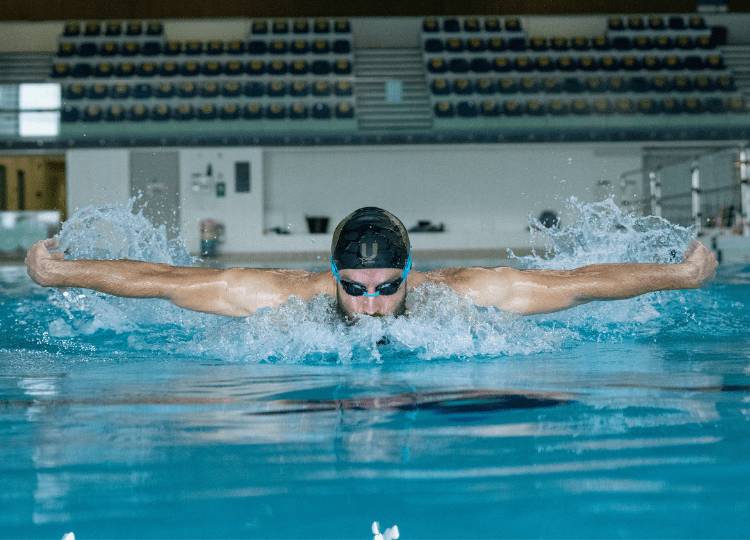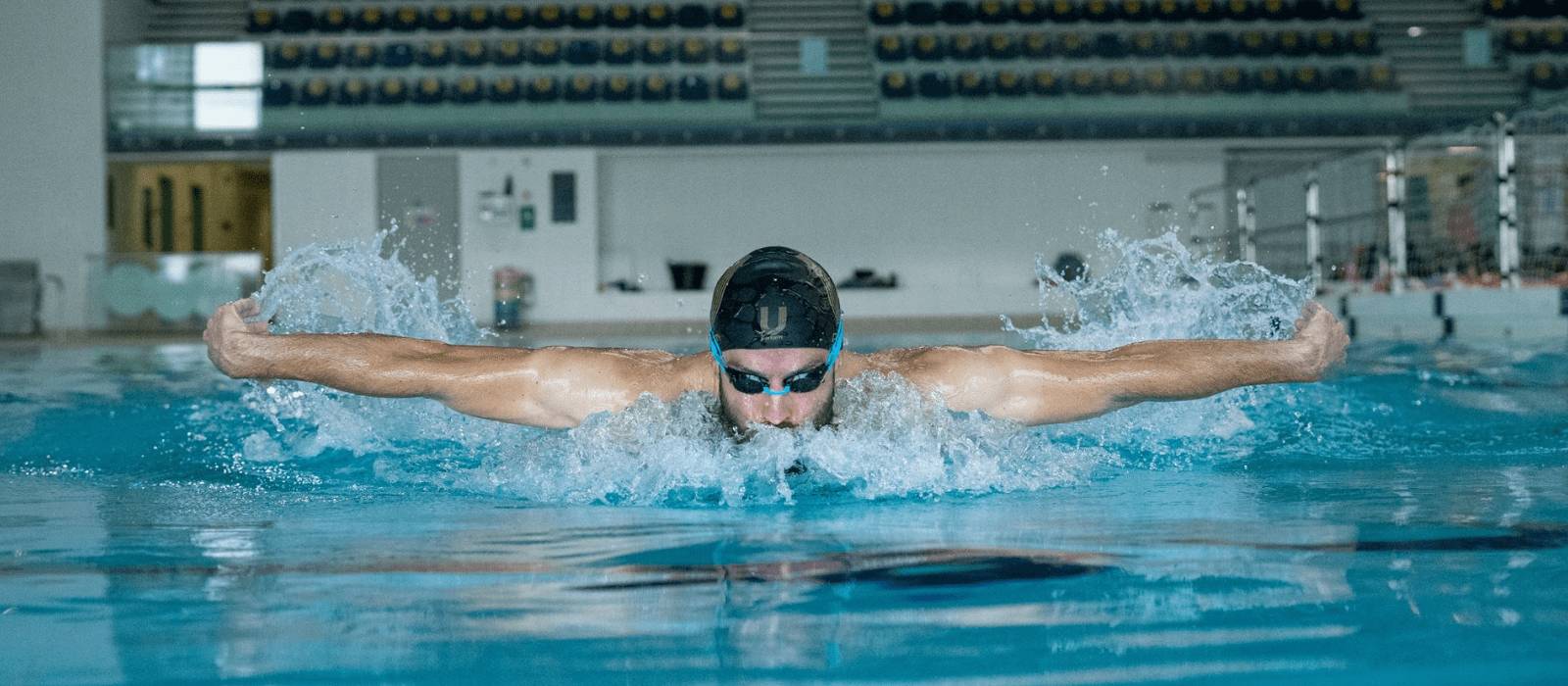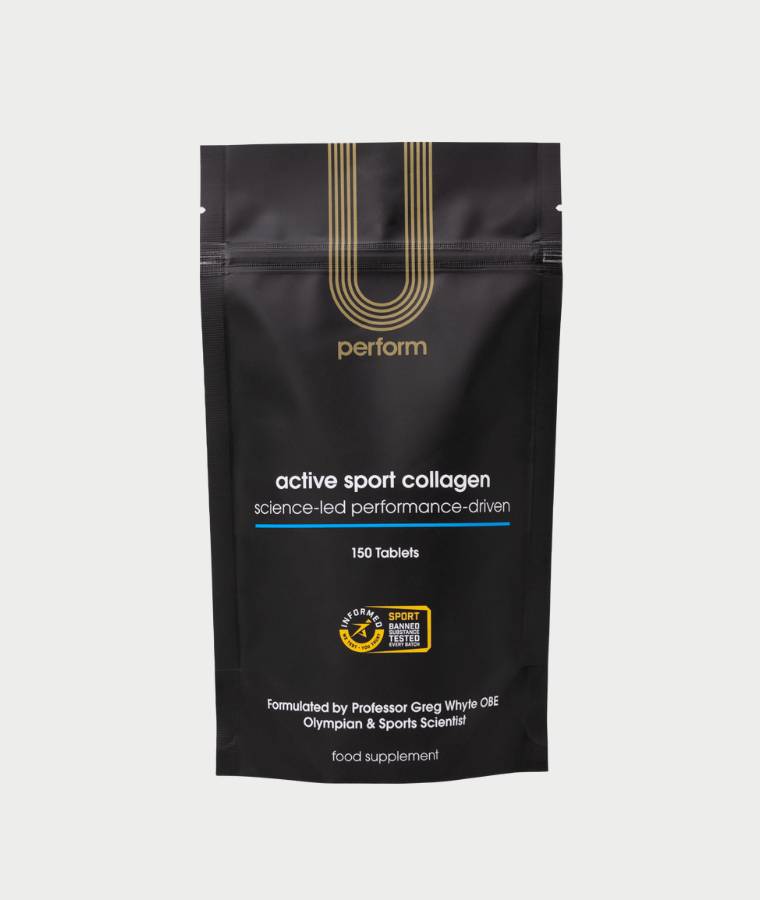Improving your swimming comes as a result of both in water training and out of water training; or ‘dryland’ training. In swimming, both cardio-respiratory endurance and muscular endurance work together to allow a swimmer to maintain different levels of intensity for equally varying lengths of time.
Dynamic strength, power, speed skills and flexibility are essential factors that contribute to effective stroke technique and efficient movement through the water. Effective stroke technique also plays a significant role in injury prevention as it ensures that the correct muscle groups and joints are being used to perform certain phases of the stroke; and that the correct forces are being applied during them.
From a training point of view, swimming in recent decades has been dominated by a focus on exceptionally high-volume training with an emphasis on developing efficiency and ‘feel’ for the water through high-volume, low intensity training.
Whilst there is evidence to suggest that this training method may be more suitable for swimmers who do indeed compete over the longer distances (anything from 800m and upwards of 10km), new evidence is suggesting that it may no longer be relevant or productive for those focussing on shorter distances to train in this way. It can also increase the risk of overuse injuries as well as ‘detrain’ the fast twitch muscle fibres that we would need to swim fast over shorter distances.
Instead, sprint swimmers should opt for an approach that favours quality over quantity of training to maximise physiological adaptations that are specific to the demands of their chosen event and improve their performance as a result.
‘Dryland’ strength training is important for all swimmers to develop and maintain muscle mass. In our opinion, it is equally as important as the training you do in the water. This is because it challenges swimmers to perform key movement patterns under a greater load than in the pool. By developing new levels of strength, power, and speed on land, this ultimately translates into greater performances in the water.
During ‘dryland’ training, swimmers should aim to target the major swimming muscle groups like back, shoulders, triceps, pectorals, the lats (latissimus dorsi), as well as abdominals, quadriceps, hamstrings, and calves.
Unfortunately, injuries happen…even to swimmers. Overuse injuries are usually the result of poor biomechanics, overtraining, as well as limited flexibility and range of motion. Injuries to the neck and shoulders usually occurs as a result of the repetitive arm movements of the freestyle stroke and will often lead to significant strain, irritation, inflammation or in extreme cases, tears to rotator cuff and bicep tendons for example.
Stress on the knee during breaststroke has also been linked to ligament injuries and patellofemoral pain as the force required to externally rotate the knee against the resistance of water is incredibly high.
‘Dryland’ training (aside from being an effective strength and power building tool) can also be used as a highly effective injury prevention tool too. Adequate warm up prior to a swim prepares the muscles for the work they are about to do.
There are plenty of exercises that can be completed in the gym or at home that will strengthen and optimise muscle groups that are predisposed to a higher risk of overuse injuries.
For example, strength training for swimmers could focus on:
- Rotator cuff and scapular muscles to improve stability of the shoulders and reduce the risk of rotator cuff impingement, rotator cuff tendonitis, bursitis, and bicep tendonitis – all of which are very common swimming injuries.
- Quadriceps (thigh muscles) and hip muscles to improve the power and efficiency of the kick, specifically for the breaststroke
- Abdominal muscles and core to allow proper rotation and stability, reducing the risk of lower back and neck injuries
Using pull-buoys or paddles as part of your in-pool training is also effective for creating sport-specific strengthening – making every length of your training count towards your next best performance.
Regardless of your current ability level or your goal, the physical demands of swim training cannot be understated and therefore creating a specific and high-quality recovery nutrition plan that can be implemented daily is of critical importance.
But what is the end result?
Well, for us it means greater consistency in training, a greater capacity to increase and tolerate the volume and intensity of training… put simply, it means U Perform is Your Proven Advantage. And with a range of clinically proven and athlete approved collagen recovery supplements we are confident you will be able to Train Harder, Recover Faster and improve your swimming performance.
Swimmers are just as susceptible to sports injuries as any other athlete or active person. Whilst the incidences of injuries caused by impact or blunt force trauma are relatively low (but not unheard of), injuries in swimming are classed as overuse injuries or micro traumas; most commonly to the connective tissue (ligaments, tendons, cartilage) in our shoulders, neck, lower back, and knee.
Some studies have suggested that elite swimmers for example can experience up to 2 injuries per 1000 hours of training, on average, which further underlines the requirement for a recovery and nutrition routine that is as equally targeted as the training plan itself – and prioritises the health and function of our connective tissues such as ligaments and tendons.
U Perform’s Active Collagen gels are a unique recovery formulation of 2 Bioactive Collagen Peptides®, TENDORFORTE® and VERISOL®, as well as added vitamins and minerals; proven to stimulate the repair and regeneration of tendons and ligaments.
Not only that, VERISOL® stimulate new collagen production body wide and targets hair, skin, and nails to protect and nourish the skin, from the inside out, against the wear and tear of chlorine, sweat and, sunlight exposure.
Thanks to growing research evidence and real-world stories proving their efficacy and value in ANY rehabilitation, prehabilitation or daily recovery nutrition program, U Perform TENDOFORTE® collagen fibres may be the missing piece in your performance and recovery puzzle.
For example, one study by the Australian Institute of Sport (AIS) examined the benefits of TENDOFORTE® over a period of 6 months. The participants were 20 runners with long-term symptoms of chronic Achilles tendinopathy, not responding to any traditional therapies, and being unable to train.
Within 3 months, 12 out of 20 participants were able to return to running after starting a therapy with a daily intake of 5g of TENDOFORTE®. What’s more, the benefits continued, and more runners returned to training in the following 3 months.
High performing tendons and ligaments combine strength and flexibility. The results from this study, and others like it show that U Perform TENDOFORTE® collagen fibres give them the right elasticity for optimal function without compromising strength or performance.
Active Collagen is becoming an essential nutritional supplement for the prevention and treatment of connective tissue injuries. Clinically proven and athlete approved…don’t be caught short off the blocks. See and feel the difference for yourself.
Improving your swimming performance is as much about the training you do out of the water as it is the training you do in the water. And swimmers will often refer to this as ‘Dryland’ training which just means strength and conditioning training in the gym.
‘Dryland’ strength training plays an important role in a swimmer’s training program as it challenges swimmers to perform key movement patterns under a greater load than in the pool to help develop and maintain muscle mass which will ultimately translates into greater performances in the water.
Muscles are the primary active part of the motor apparatus, and muscle protein turnover (breakdown vs. resynthesis) is very high when we are taking part in swimming. This muscle damage, in the form of ‘micro-tears’ is inevitable and is an essential part of the training process and how we respond to that is ultimately indicative of the progress and adaptations we will produce because of that bout of exercise or training.
Supplementing with a high-quality recovery protein source such as U Perform’s Active Whey & Collagen post-workout, meets this need conveniently and cost-effectively. Alongside whey protein, collagen supplementation not only provides a high-quality source of Essential and Branched Chain Amino Acids, but targeted Bioactive Collagen Peptides® have been proven to improve the recovery of muscle tissue, to increase their strength and make them more resistant to injury.
The latest innovation in collagen technology, BODYBALANCE® is a brand-new muscle specific Performance Peptide®. BODYBALANCE® has a multi-factorial effect on body composition and the maintenance and development of muscle mass.
Furthermore, several randomised, placebo controlled. double blinded studies have demonstrated the efficacy and potential of the daily intake of 15g of BODYBALANCE® in combination with resistance training showing increases in muscle size, strength, decrease in waist circumference and, improved muscle recovery times.
What a lot of swimmers don’t realise is that up to 10% of the protein that forms muscle tissue is collagen. Now this might not seem like a lot, but when you understand the role that this small amount of collagen plays in the repair, strength, and function of muscles you’ll quickly change your mind as to how important collagen really is.
Collagen fibres are comparable to that of a rope in that they are built up from lots of individual fibres twisting tightly around themselves and then twisted together with others to form long strings creating a highly stable and robust structure.
Due to this repeatedly twisted structure, collagen fibres offer incredible tensile strength. Collagen fibres are intertwined between the layers of fibrils in muscle tissue, thus giving the muscles the added rigidity and flexibility, they need to perform optimally under load, i.e., when swimming or performing weighted exercises in the gym.
Taking Active Whey & Collagen daily after swimming or gym is a great way to maximise your adaptations from training and turn up recovered and prepared for training the next day.
Unlike when we are running, jumping, or kicking a football, there is little to impact when we are swimming other than when we are diving off the starting blocks or pushing back of the wall after each turn.
However, joint pain isn’t uncommon for swimmers, especially when you are regularly training and competing. Poor programming, overtraining and other factors can lead to joint deterioration, joint pain in the neck, shoulders, and knees, and in more extreme cases: joint disorders like osteoarthritis.
Knee injuries may not be the most common swimming injury but that doesn’t mean that they aren’t still incredibly painful and disruptive. The knee is a complex joint and breaststroke in particular places an enormous amount of strain on the medial capsule of the joint, on ligaments and tendons that facilitate the movement of the joint as it externally rotates and fights against the resistance generated by moving through the water.
Rotator cuff tendonitis, bicep tendonitis as well as bursitis in the shoulder can also lead to tears in the tendons and cartilage around the shoulder socket which will cause significant amounts of pain and deterioration of the tissues and articular surface over time which could mean significant amounts of rehabilitation time and even surgery which may affect your ability to continue swimming in the long term.
If you are serious about your swimming or are concerned with existing joint pain when swimming, it becomes very clear that maintaining the integrity and mobility of your joints and articular surfaces is crucial; whether you are wanting to take the next step up in your swimming performance or simply looking to enjoy swimming as part of your active lifestyle.
With a unique formulation of Type II optimised Bioactive Collagen Peptides®, FORTIGEL® is an innovative ingredient clinically proven to activate the growth of new cartilage and protect the integrity of existing cartilage by stimulating specific collagen producing cells in the cartilage tissue itself, helping to ease joint discomfort, and keep joints moving smoother for longer.
The effectiveness of FORTIGEL® has been scientifically proven in numerous studies and according to published research, the ingestion of FORTIGEL® collagen peptides stimulate a significant increase of cartilage tissue metabolism, against placebo.
One study, carried out by Harvard University, investigated the long-term effect of FORTIGEL® treatment on the composition of hyaline cartilage in individuals with early knee osteoarthritis, a common condition that can affect the ability for us to stay in the game as we get older. The analysis of the final cartilage scans revealed a statistically significant increase in proteoglycan density in the medial and lateral tibial regions of the FORTIGEL® treated subjects compared to the placebo group.
Studies have been carried out in various groups and looking at activity related joint pain as well as joint disorders: including osteoporosis and osteoarthritis with all showing statistically significant results in as little as 12 weeks (minimum 5g daily serving FORTIGEL®).
Taking Active Sport Collagen daily is a convenient and effective way to boost collagen levels in the body and to optimise your joint health for swimming. Try it today - SEE and FEEL the difference for yourself!





